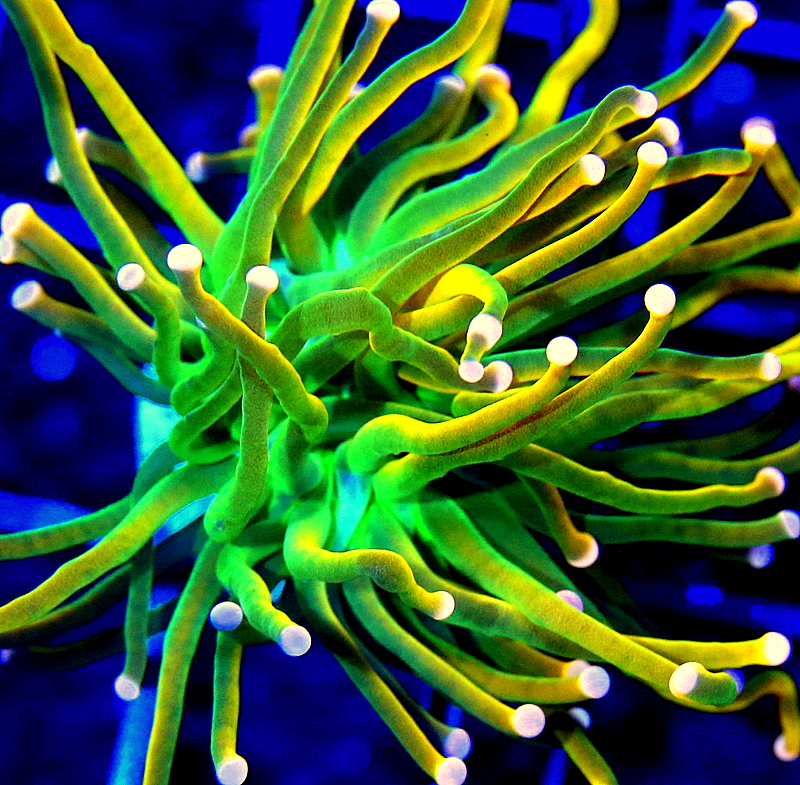Extreme Corals News and Updates
How to acclimate Corals to your Reef Tank
Acclimation of new corals can be a tedious process and daunting to a new hobbyist, but it is critical for proper health of your new coral.
Be sure to follow the steps below to ensure that you have acclimated your new corals correctly
by scott Shiles • March 02, 2023
SPS Coral Care, Zoanthids Coral Care, Soft Corals Care, Reef Tank Maintenance, LPS Coral Care, All Corals
If you're setting up a new reef tank, or if you're adding new corals to an existing tank, it's important to properly acclimate them to their new environment. Corals are delicate creatures that can be easily stressed by changes in water chemistry, temperature, and lighting. Improper acclimation can lead to a weakened immune system, which can leave your corals vulnerable to disease and other problems.
Here are some steps you can follow to properly acclimate your corals:
Float the bag:
When you receive your new corals, they will likely come in a plastic bag filled with water. Float the bag in your tank for at least 15-20 minutes to allow the temperature in the bag to equalize with the temperature in your tank. This will help prevent thermal shock, which can be fatal to corals.
Test the water:
While the bag is floating, test the water in the bag for pH, salinity, and other important parameters. This will give you an idea of how different the water in the bag is from the water in your tank. If there are significant differences, you may need to acclimate your corals more slowly.
Drip acclimation:
Once the temperature in the bag has equalized, you can begin drip acclimation. This involves slowly adding water from your tank to the bag over a period of several hours. You can do this by siphoning water from your tank into the bag using airline tubing. Start by adding a few drops of water every few minutes, and gradually increase the flow rate over time. During the acclimation process, it is recommended to turn off the aquarium lights to minimize stress on the new arrivals. Livestock that have been in darkness for an extended period will not immediately adapt to intense aquarium lighting. For new additions to a reef tank, exposure to high light levels can be damaging, particularly for corals accustomed to more moderate illumination. By keeping the lights off, you help prevent potential stress and light-induced harm to the newly introduced marine life, ensuring a smoother acclimation process and better overall health for the aquarium inhabitants.
Check the parameters:
As you drip acclimate your corals, it's important to periodically test the water in the bag for pH, salinity, and other important parameters. If you notice any significant changes, you may need to slow down the drip rate or take other steps to ensure a smoother transition.
The optional step of pest control dip serves the purpose of reducing the risks associated with hitchhikers and parasites entering aquariums. It is recommended to use pest control dips to minimize the likelihood of unwanted organisms reaching your aquarium systems. This process involves dipping corals regularly, especially when transferring them between different setups. While utilizing dips like Coral Rx for addressing pests such as flatworms and nudibranchs, and Lugol's Iodine for bacterial infections, helps in managing these potential threats, it is essential to note that complete elimination of the risks cannot be guaranteed.
Transfer the corals:
Once the drip acclimation is complete, carefully transfer the corals from the bag to your tank. It's important to handle the corals gently and avoid touching their delicate tissues. Place them in a spot with appropriate lighting and water flow, and monitor them closely for signs of stress or other issues.
Utilizing a quarantine system for acclimating new corals involves a systematic approach to ensure the successful introduction of the specimen into the display tank. To begin, after acquiring a new coral specimen, it is essential to find an appropriate location within the tank with suitable flow and lower lighting conditions. This allows the coral to gradually adjust to its new environment and lighting levels over a period of a few days.
For acclimation using a quarantine system, the recommended approach is to employ the same method as when initially introducing the coral to the tank, allowing it time to adapt to the quarantine conditions. This process aids in reducing potential stress and risks to the coral during the acclimation period. Once the quarantine period is complete, the procedure should be repeated when transferring the coral from the quarantine system to the main display tank. This step ensures a smooth transition for the coral, helping it acclimate effectively to its new surroundings and increasing its chances of thriving in the established tank environment.
By following these steps, you can help ensure a smooth transition for your corals and give them the best possible chance of thriving in your reef tank. Remember to be patient and take your time during the acclimation process - it may take several hours, but it's worth it to protect the health and wellbeing of your coral colony.
1 Comment
Very Helpful!
Since I an just getting starting to keep coral now, I found the "How to acclimate Corals to your Reef Tank" on your blog page very helpful. Thank you.
Carlos Feliciano, 03/13/2023 15:13:51

